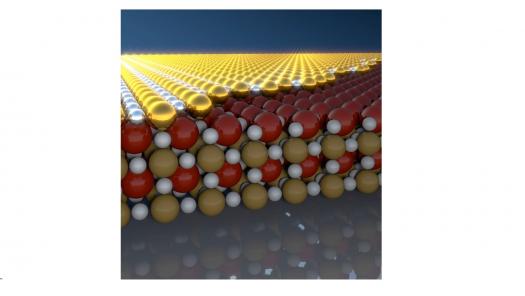Exotic material can shrink electronic devices

Converting LaNiO3 into a metal insulator could make electron devices less than a nanometre thick
Ever-shrinking electronic devices could get down to atomic dimensions with the help of transition metal oxides
This is a class of materials that seems to have it all: superconductivity, magnetoresistance and other exotic properties.
Mny physicists and materials scientists are excited in trying to understand everything about these oxides, as well as in finding new ways to control their properties at the most fundamental levels.
Researchers from Cornell and Brookhaven National Laboratory have shown how to switch a particular transition metal oxide, LaNiO3, from a metal to an insulator by making the material less than a nanometre thick.
The team, which published its findings in the May issue of Nature Nanotechnology includes researcher Kyle Shen, an associate professor of physics, first author Phil King, a Kavli postdoctoral fellow now on the faculty at the University of St. Andrews in the UK, Darrell Schlom, the Herbert Fisk Johnson
Using a precise growth technique known as molecular-beam epitaxy (MBE), King synthesised atomically thin samples of LaNiO3 and discovered that the material changes abruptly from a metal to an insulator when its thickness is reduced below one nanometre.
When that threshold is crossed, its conductivity - the ability for electrons to flow through the material - switches off like a light, a characteristic that could prove useful in nanoscale switches or transistors, Shen says.
Using a one-of-a-kind system at Cornell, which integrates MBE growth with a technique called angle-resolved photoemission spectroscopy (ARPES), King and colleagues were able to map out how the motion and interactions of the electrons in the material changed across this threshold, varying the thickness of their LaNiO3 films atom by atom. In doing so, they discovered that when the films were less than 3 nickel atoms thick, the electrons form an unusual nanoscale order, akin to a checkerboard.
The results demonstrate the ability to control the electronic properties of exotic transition metal oxides at the nanometre scale, as well as revealing the striking cooperative interactions that govern the behaviour of the electrons in these ultrathin materials. This paves the way for making advanced new electronic devices from oxides.
These results are detailed in the paper, "Advanced Online Publication" in: Atomic-scale control of competing electronic phases in ultrathin LaNiO3," by P.D.C. King et al in Nature Nanotechnology. DOI: 101038/nnano.20
The work was supported by the Kav liInstitute at Cornell for Nanoscale Science, the Office of Naval Research, the National Science Foundation through the Cornell Centre for Materials Research (MRSEC program), and the US Department of Energy, Basic Energy Sciences

































